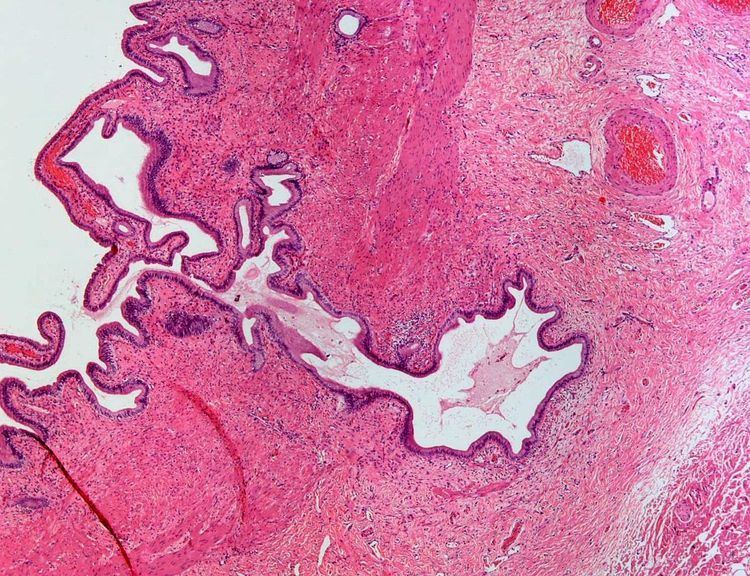Specialty gastroenterology ICD-9-CM 575.8 | ICD-10 K82.8 | |
 | ||
Rokitansky–Aschoff sinuses, also entrapped epithelial crypts, are pseudodiverticula or pockets in the wall of the gallbladder. They may be microscopic or macroscopic.
Contents
Histologically, they are outpouchings of gallbladder mucosa into the gallbladder muscle layer and subserosal tissue as a result of hyperplasia and herniation of epithelial cells through the fibromuscular layer of the gallbladder wall. They are usually referred to as adenomyomatosis.
They are not of themselves considered abnormal, but they can be associated with cholecystitis.
Pathophysiology
They form as a result of increased pressure in the gallbladder and recurrent damage to the wall of the gallbladder.
Associations
Black pigment gallstones can form in Rokitansky-Aschoff sinuses of the gallbladder after the fourth to fifth decades of life in absence of the typical risk factors for bilirubin suprasaturation of bile. Hence, they are associated with gallstones (cholelithiasis). Cases of gall bladder cancer have also been reported to arise from Rokitansky–Aschoff sinuses.
Diagnosis
Since Rokitansky–Aschoff sinuses can be normally present in the gall badder without any pathology, the radiological detection of these is only of academic interest. Magnetic resonance imaging plays an important role in the diagnosis of Rokitansky–Aschoff sinuses.
Eponym
They are named after Carl Freiherr von Rokitansky (1804-1878), a pathologist in Vienna, Austria and Ludwig Aschoff (1866-1942), a pathologist in Bonn, Germany.
